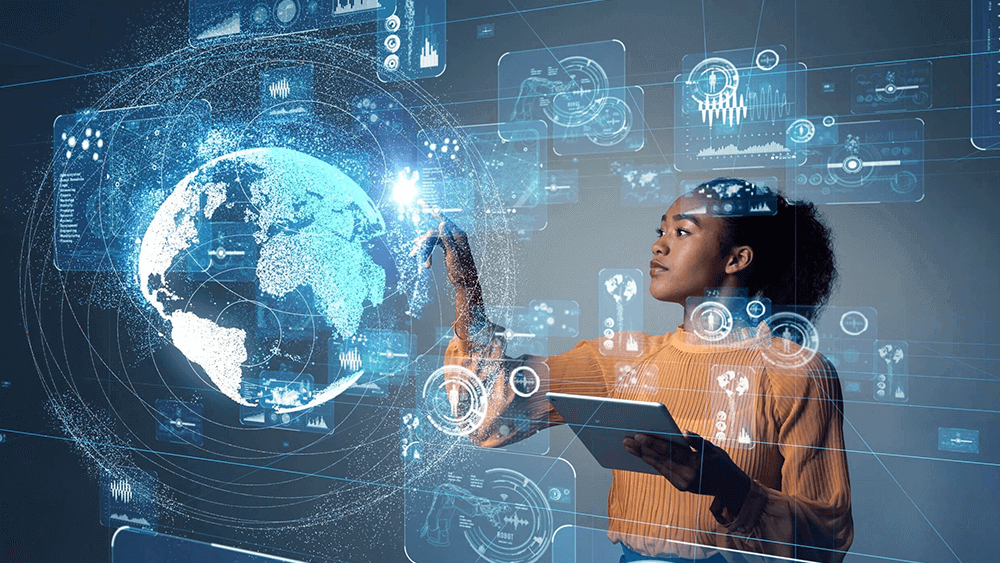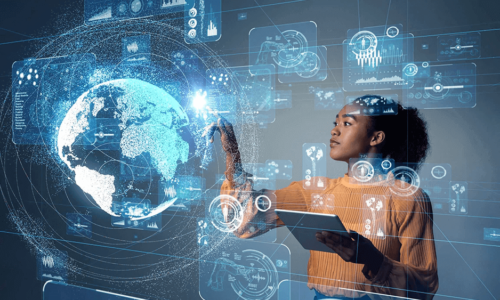D ata is everywhere and the rate of growth is spectacular. Most estimates show that the data in the digital universe doubles every 2 years. Part of that digital universe includes human and machine created data, such as the data generated from Internet of Things (IoT).
The growth of human and machine created data is growing 10x faster than traditional business data. It can be found around every corner, within every Internet search and, in reality, on every street corner. Consumers take advantage of data to buy anything from their next vehicle to the “healthiest” fast-food burger. Small businesses take advantage of website analytics to customize local marketing approaches and identify key demographics, while a corporate enterprise implements big data into computer learning applications and identifying future products to manufacturer. In essence, data makes the world go round. Having the latest and most in-depth information has changed the tides of military conflicts throughout world civilization and allowed for space travel. Of course, with the advancement of computer technology, more data can be analyzed, identified, sourced and streamed in a shorter period of time. Big data is influencing in every corner of the globe. Here are just a handful of ways the utilization of big data continues to improve lives and drive business into the future.
Financial Trading
The understanding and analyzing of financial information has long driven the world of financial trading. All it takes is one look at a mutual fund to understand the importance of big data. While it still takes skilled financial advisors to read and identify shifts in the market and emerging trends, applications designed to crawl through financial information with a fine tooth (digital) comb makes all of this easier. In fact, more and more equity firms are implementing high-end data algorithms in order to stay ahead of the curve and identify upcoming trends further in advance. It is advantageous for investment firms to locate these monetary possibilities early on in order to maximize return on investment. This may be a more specialized field for those with the means of future investing, but big not only influences the world of finances, it is starting to drive it.
Traffic Optimization
The utilization of technology within major cities and traffic routes is nothing new. The use of analytical data to identify busy times and most used stations has been used to improve public transportation for decades. However, this information is now used to bolster the flow of automotive traffic as well. The ability to analyze traffic in real time and adjust stop lights, the length of a light and sync both public and private transportation together has grown into a major business. However, this real time big data analyst is just the beginning.
In the United States, Pittsburgh currently used traffic signals with artificial intelligence, designed to not only improve the flow of traffic but cut down on idling and braking (which in turn reduces the amount of released greenhouse gases into the atmosphere). Since the implementation of these A.I. traffic signals within Pittsburgh, idling is down over 40 percent, with automotive breaking down by around 30 percent (Paste Magazine, 2017).
In the future, technological designers are looking at allowing vehicles to share input rout information with the computerized learning traffic lights, allowing the lights to process information and adjust when lights change in order to improve traffic flow and predict when and where traffic congestion may take place (and reduce it accordingly).
Automotive Performance
Automobiles have contained computers, in some shape or form, for decades. These computerized systems have gone from controlling basic performance features within a vehicle to monitoring the entire car, providing mechanics (and anyone with the capability of reading displayed codes) with insights into issues within the vehicle and what needs work. In recent years, cars have seen the installation of self-parking, lane detection and merging features, all of which are designed to inform a driver as to if other vehicles are present and to help avoid accidents. Some current vehicles, technology developers and automakers have taken this several steps further.
Google Maps is the most used GPS system within the United States. Through the company’s continual effort to map out every roadway in the U.S. (while doing the same for much of the world), the application has the ability to provide not only directions, but update drivers on accidents on route and help divert the driver along an alternative path in real time. Google has continued with this research into self-driving cars, capable of not only using the GPS mapped system, but to communicate with other nearby vehicles, in order to reduce human error and boost driving safety. As of September, 2016, Google’s fleet of self-driving cars had covered over two million miles, and the handful of accidents the vehicles had been a part of were all human error on the part of another driver. While these vehicles are not yet able to completely account for the human element, with the help of computerized learning and A.I., these accidents are likely to become less frequent in the future, even when human drivers are involved in other, non-computerized driving vehicles (The Guardian, 2016).
Sports Performance
For non-athletes, what actually goes into training for the sporting event remains a bit of a mystery. Outside of some snippets and behind the scenes coverage at half-time or between innings, the average sports fan likely does not know the kind of technology and big data analytics that goes into modern training. It is now possible for trainers to monitor how an athlete lifts weight, and based on data points, identify weaker muscles used during the lift and how to better train the weaker muscles in order to improve performance and boost muscle growth. Other tests allow athletes to go against teams through virtual reality, which is directly taken from analyzing each player on a team in order to help determine how the other team is most likely to respond to specific plays or actions. Beyond this, many top teams also track everything from sleep and nutrition in order to identify ways to improve nutritional absorption, boost oxygen flow throughout the body and convert nutrients within the blood flow to energy (Recode, 2017).
Improving Healthcare
Much in the same way technology is used to monitor pro athletes in order to boost performance, technology is used to monitor patients in order to identify better ways to administer treatment. By analyzing dozens of data points given off by a patient (ranging anywhere from brain ways to heart beat and the kinds of nutrients consumed during a day) a medical staff can take the data analysis and use this information to shift treatments and provide a tailor made way of administering the necessary healthcare to a patient. On top of this, healthcare professionals are using big data in order to predict and prevent possible disease outbreaks and epidemics. This technology is used not only in major metropolitan areas but also third world countries. Researchers even monitor social media to see postings regarding sickness and identify problem areas within a community (Science Daily, 2017).
As the ability to analyze big data continues to improve, informational sourcing will become more and more a tentpole in just about everything in the developed world. From companies using big data to optimize the marketing process to improving healthcare and device performance, the age of big data is here for good. These are just a handful of the ways analytical data can and will continue to influence the world in nearly every corner of technological society. If our BlueBolt team can help your team harness your data and make sense of it, please connect with us.



